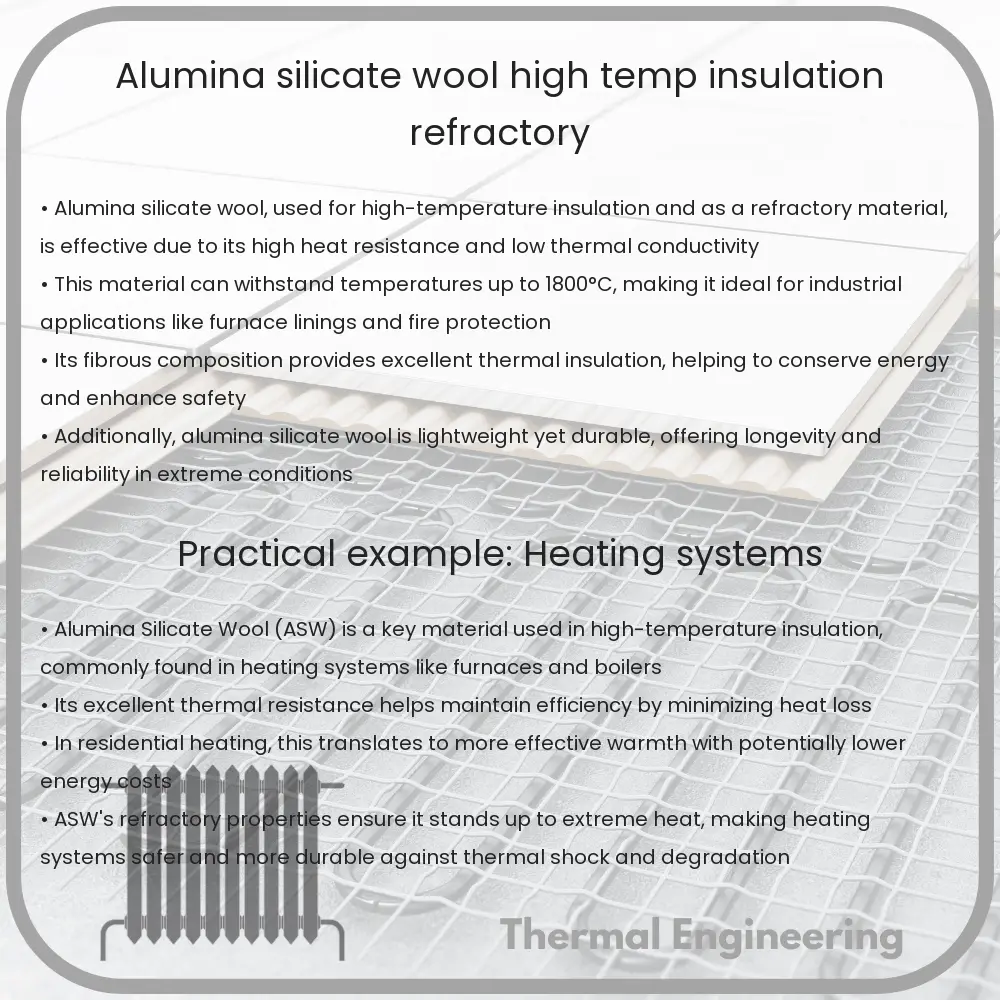Learn about alumina silicate wool, its properties, applications, and safety concerns in high-temperature insulation and industrial uses.

Understanding Alumina Silicate Wool
Alumina silicate wool, commonly known as ceramic fiber wool, is a type of high-temperature insulation material made from alumina (Al2O3) and silica (SiO2). This material is renowned for its excellent thermal insulation properties and resistance to thermal shock, making it highly effective in industrial applications such as furnaces, kilns, and other high-temperature processes.
Properties of Alumina Silicate Wool
Alumina silicate wool is notable for its low thermal conductivity, which makes it an excellent insulator capable of withstanding temperatures up to 1400°C (2552°F). It is also lightweight, which helps in reducing the overall weight of the thermal insulation system. Additionally, it has good chemical stability and resistance to most corrosive agents, although it can be affected by strong alkalis and phosphoric acid.
The material’s fibrous nature allows it to be formed into various shapes and sizes, including blankets, boards, papers, and modules, thereby providing flexibility in application across different industrial setups.
Applications of Alumina Silicate Wool
- Refractory Linings: It is commonly used in the linings of furnaces and kilns to maintain high temperatures while preventing heat loss.
- Thermal Barriers: Used as a barrier to protect equipment and personnel from extreme heat.
- Fire Protection: Its high-temperature resistance makes it suitable for fireproofing applications.
- High-temperature Filtration: It can be used in filtering hot gases or liquids, as it retains its structural integrity and filtration properties even at high temperatures.
Health and Safety Concerns
Though highly effective as an insulator, alumina silicate wool poses certain health risks if not handled properly. Inhalation of ceramic fibers can lead to respiratory issues as the small fibers can easily be inhaled and embed themselves in the respiratory tract. Protective equipment such as masks, gloves, and safety goggles are essential when handling this material. Most industries now adhere to strict guidelines on its usage, handling, and disposal to mitigate these health risks.
Environmental Impact
Environmental concerns related to alumina silicate wool are primarily focused on the disposal of the material. It is not biodegradable, and care must be taken to dispose of it in a manner that does not harm the environment. Recycling and reuse options are being explored and developed to minimize the environmental footprint of this essential industrial material.
Conclusion
Alumina silicate wool’s outstanding thermal stability and insulating properties make it indispensable in high-temperature industrial applications. However, careful consideration of the health risks and environmental impact associated with its use is crucial. As technologies advance, continuing development in the handling and recycling methods of this material will play a key role in maintaining its prominence as a refractory material while reducing its environmental impact.